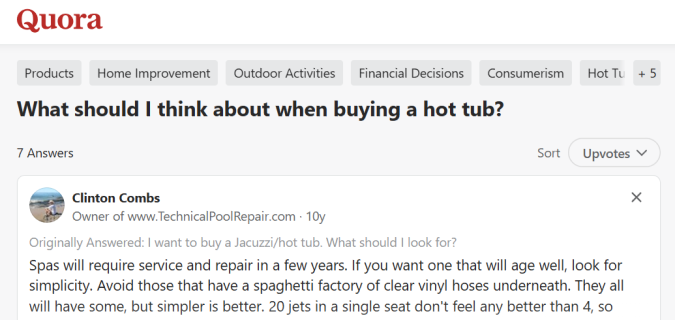How do you feel about offering discounts to your customers?
Most marketers I know have an opinion on this.
Some hate it. Some love it.
Discounts, loyalty offers, and other similar pricing strategies may seem like they would hurt your bottom line, but they’re a common business practice.
It makes good sense. A well-planned sale has the ability to move inventory, draw new customers, and achieve sales targets, particularly during slow seasons.
People who are opposed to discounts have their reasons.
Before you implement any special offers and cut prices by half in the hopes of driving sales, you first need to plan and check your pricing structure to ensure you protect your profit margins.
A sale without a plan is a disaster.
Here are just a few of the basic steps to take when planning discount and pricing strategies:
- Identify your existing profit margin, break-even point, and markup
- Identify the sweet spot for your discount price that ensures your still making a profit
- Look up what your competitors are doing—including their discount offers and similar promotions
- Think of other ways to drive sales without having to resort to marked down pricing
- Identify what times during the year normally have a dip in sales
Once you’ve taken these steps, you can then try these discount and sales strategies. And don’t worry, some of these techniques might defy common sense, but…
1. Understand The Power Of Psychological Pricing
If you’re like me, you’ve probably wondered at some point why retailers bother to take 1 cent off the price of their products, pricing it at $4.99, $9.99, and $99.99 instead of just rounding it off to the nearest tens or hundreds.
The answer has to do with psychology.
To be specific, it’s called psychological pricing or charm pricing. It’s a pricing strategy based on the idea that pricing has a psychological effect on people’s purchase decisions.
Chances are, you’ve probably fallen victim to it. Even though a product was priced at $99.99, it’s likely that you still believed it was far cheaper than $100.
While psychological pricing may seem more speculation than actual science, studies on the psychological phenomenon show it works.
One research paper involving three separate field studies found that the, “use of a $9 price ending increased demand in all three experiments.”
2. Try Percentage Discounts
Offering discounts based on specific percentages is one of the most popular ways to incentivize purchases.
The percentage you choose really depends on how much you want to drive sales.
For example, you can easily stay on the safe side of things by offering small discounts of 5 to 10 percent, appealing to buyers who are close to making a purchase decision and just need a nudge in the right direction.
On the other hand, discounts of 25 percent, 50 percent, and 70 percent are great if you want to move old stock that’s causing you to spend too much on storage.
In cases like this, it might be more cost efficient to get rid of these old products.
Source
The image above uses data collected by Wallet Hub on Black Friday deals in 2015, showing where discounts were concentrated the most.
This data should give you a general idea of which products customers expect to receive retail discounts.
3. Create And Promote Event-Based Discounts
If you’re faced with the task of having to continually move product, you know how important it is to think of ways to sustain customer interest and keep sales going.
One way of doing that is by creating special events that give you a valid reason to offer discounts in the first place.
In turn, this has the effect of creating brand hype and creating expectations among your audience. Your audience will come to understand that no matter what time of the year, you’re going to have something special on offer.
Events can revolve around holidays, anniversaries, brand milestones, or just about any occasion worth celebrating.
4. Sweeten The Pot With Free Shipping
In 2014, BI Intelligence published a report by UPS and comScore showing that the primary cause of online shopping cart abandonment—when shoppers add items to the cart but leave before finalizing the purchase—was higher than expected shipping costs.
Free shipping may seem like it would drive up costs and affect profits.
But there are good reasons to offer it. Offering this level of motivation and incentive gives buyers a reason to make a purchase. And once they’ve made a purchase, they are now a customer. Think of the total lifetime purchases that customer will make and how it will shape your future success.
Before you do this, it’s imperative that you know your customer lifetime value (CLV).
5. Incentivize The Purchase Experience With Free Gifts
More than anything else, buyers want to get a good deal.
Free gifts are a great way to generate interest among your audience. If used correctly, these gifts can increase order sizes and help move stagnating product.
As for what kind of free gifts to offer, consider something more valuable than your average discount coupon or voucher. These types of offers are usually only redeemable when a customer makes a purchase or spends a certain amount.
As a rule of thumb, give gifts with a value of $5 to $10. These could be knickknacks or small items that customers may not think of buying, but will enjoy having anyway.
6. Weekly Or Monthly Offers
Although weekly and monthly special offers are old sales strategies, they’re a great way to foster customer loyalty.
Regularly occurring offers encourage existing buyers a reason to return and see what offers you have in store for them.
The example above shows an ad for a promotion happening every Monday. The customers at this bowling alley may develop an expectation for the event, and be more willing to spend.
7. Offer Discounts For Newsletter Subscribers
When done right, email subscriber lists are powerful marketing tools for online retailers.
By incentivizing the act of signing up for your newsletter campaign using a discount or special offer, you not only improve your conversion rate, but you also obtain a potential customer’s email address.
Every subscriber is someone to market new products and offers to.
More importantly, that person is already warm to the idea of making a purchase on your site.
8. Offers For Social Shares
If you’re having problems spreading word of your business online or offline, you can try giving your visitors and existing customers an incentive to share your site and its products with their respective social circles.
In exchange, you can provide a special offer or discount.
It may not be a free social media marketing technique, but it’s an efficient way to create interest through word of mouth.
9. Exclusive App Offers
Do you have an app you’d like people to download? Try holding exclusive offers for mobile users in order to create interest in your app.
As customers move away from desktops and do their shopping on mobile apps, retailers need to accommodate users and provide an outstanding mobile shopping experience.
The data shows that shoppers use these apps. In fact, 16% of shoppers have more than 11 such apps on their phone.
Keep in mind that rolling out an app isn’t easy.
It usually takes time for customers to want to download an app. Many users prefer to wait for reviews from other users.
You can encourage shoppers to try your app by incentivizing purchases made on the app, offering discounts and special offers exclusive to mobile shoppers.
10. Tap The Power Of Influencers
Influencer marketing may seem like a new strategy, but it’s as old as when celebrities started to endorse products and brands.
Partnerships with influential people in your industry and niche allow you to leverage their personal networks, providing them with exclusive offers.
These are usually done by providing influencers/endorsers with exclusive discount or promo codes (similar to the example above), which their audiences can redeem upon purchase.
11. Retarget Offers Towards Warm Leads
For many shoppers, the final purchase decision doesn’t happen the first time they’re on your site.
There are times when visitors are on your site and browse through your product, and for certain reasons, have to leave.
In cases like this, retargeting ads are a great way to remind these users to return to your site, giving them a nudge in the right direction.
Note that these visitors may already be warm to your brand and its products, so all they need to convert into buyers is a helpful push.
Conclusion
Discount techniques and special promotions offer several benefits, ranging from increased sales, high volume of product movement, and customer engagement.
While the prospect of attracting new customers and boosting profits sounds tempting, it is important to understand that not all businesses—online or offline—can afford to provide these special offers.
For example, your business may be a B2B enterprise, with clients more concerned about quality than pricing. In addition, your business might not have the resources to offer discounts without profits taking a hit.
Before anything else, be sure you have a clear goal with your promotions in order to use them effectively to meet objectives and engage customers. Always weigh the cost to benefit ratio of these promotions before implementing them.
What are your preferred discount techniques? Which ones have the most success?
*Featured Image Source














